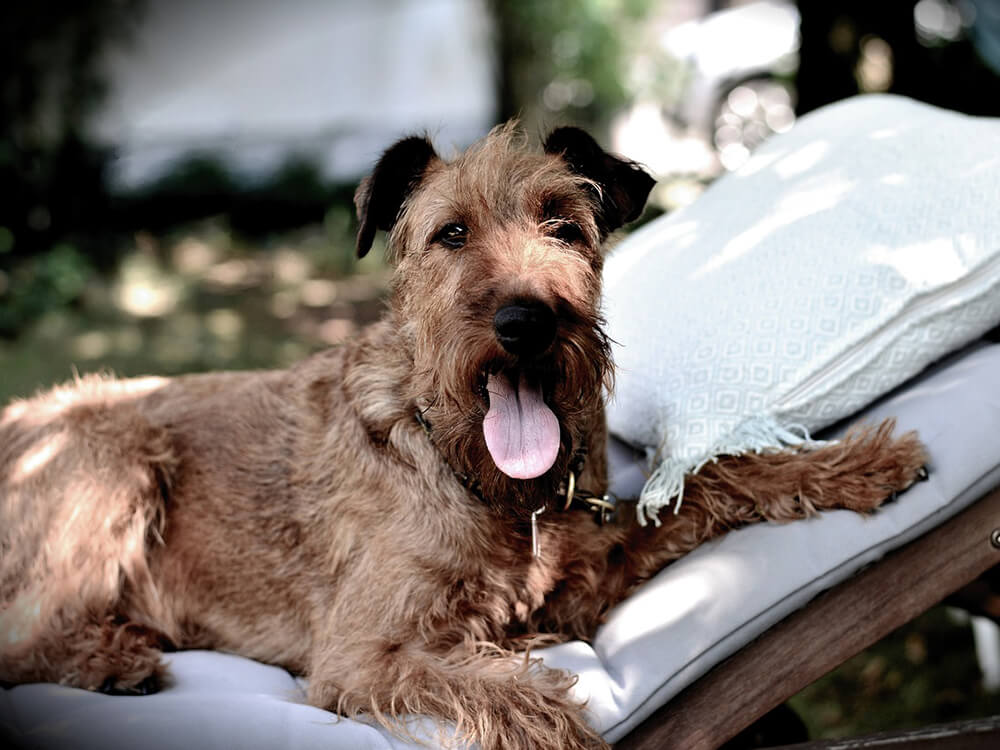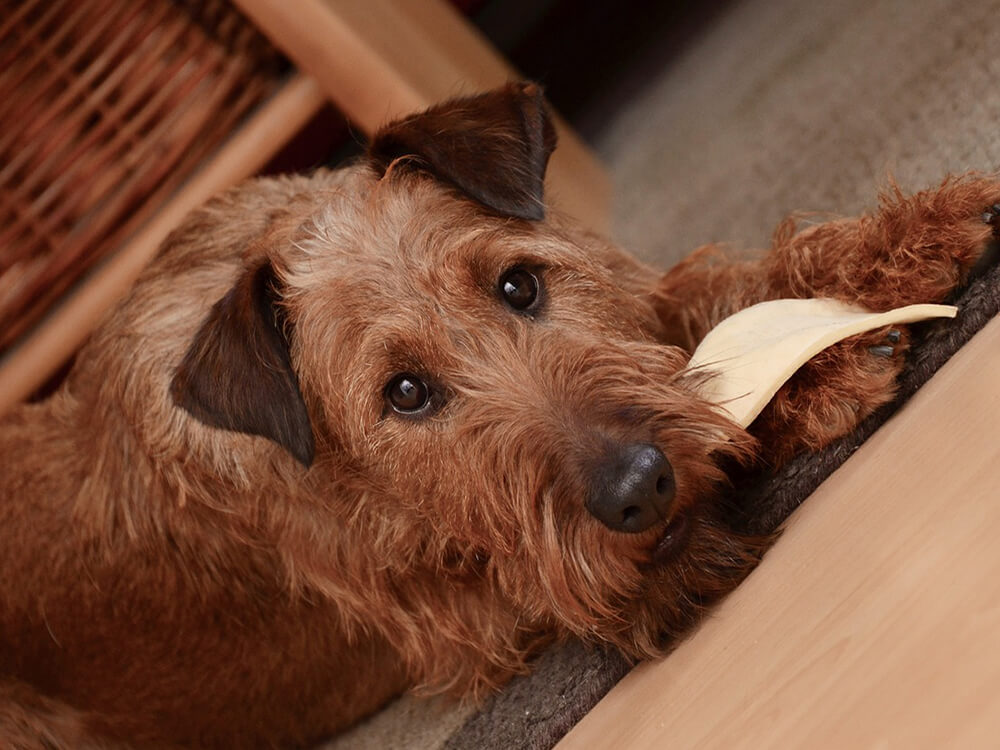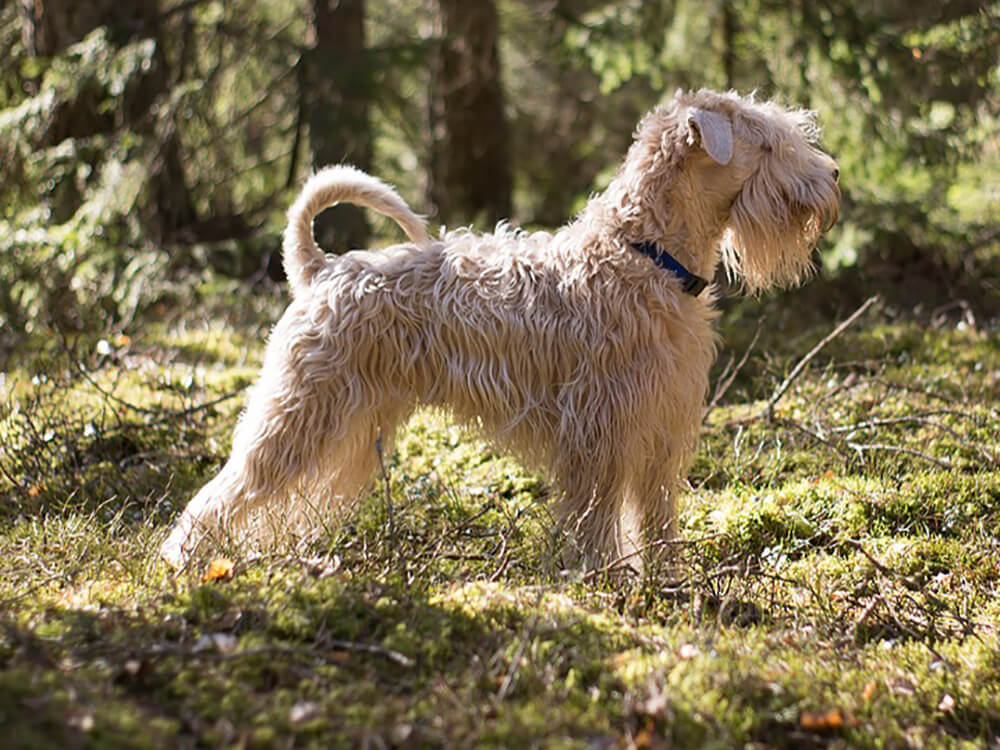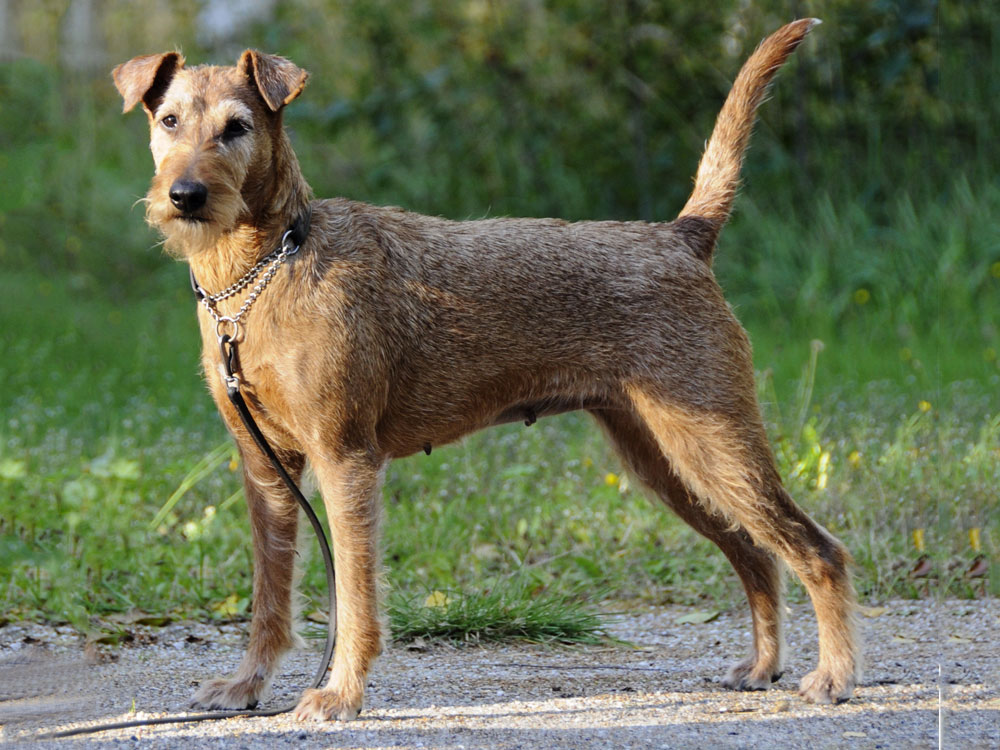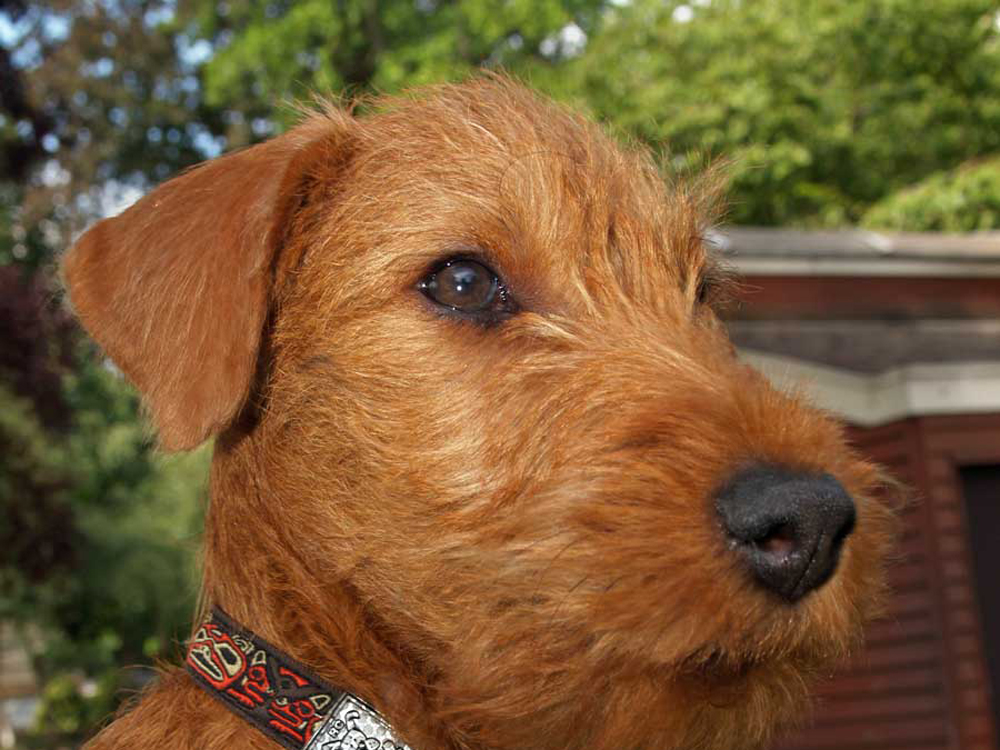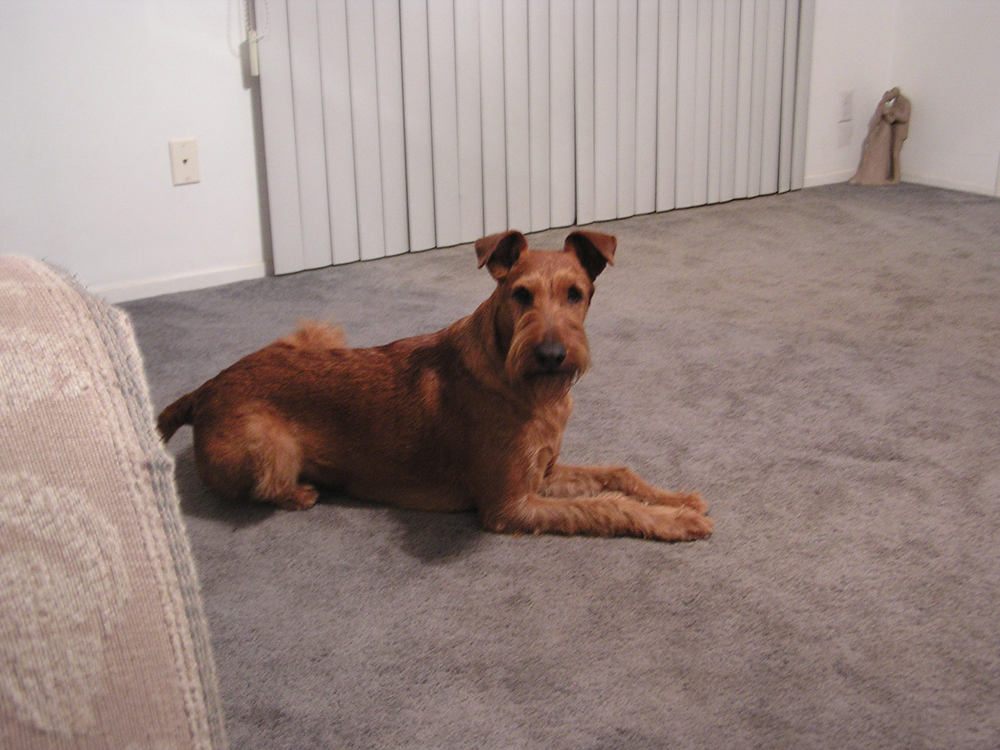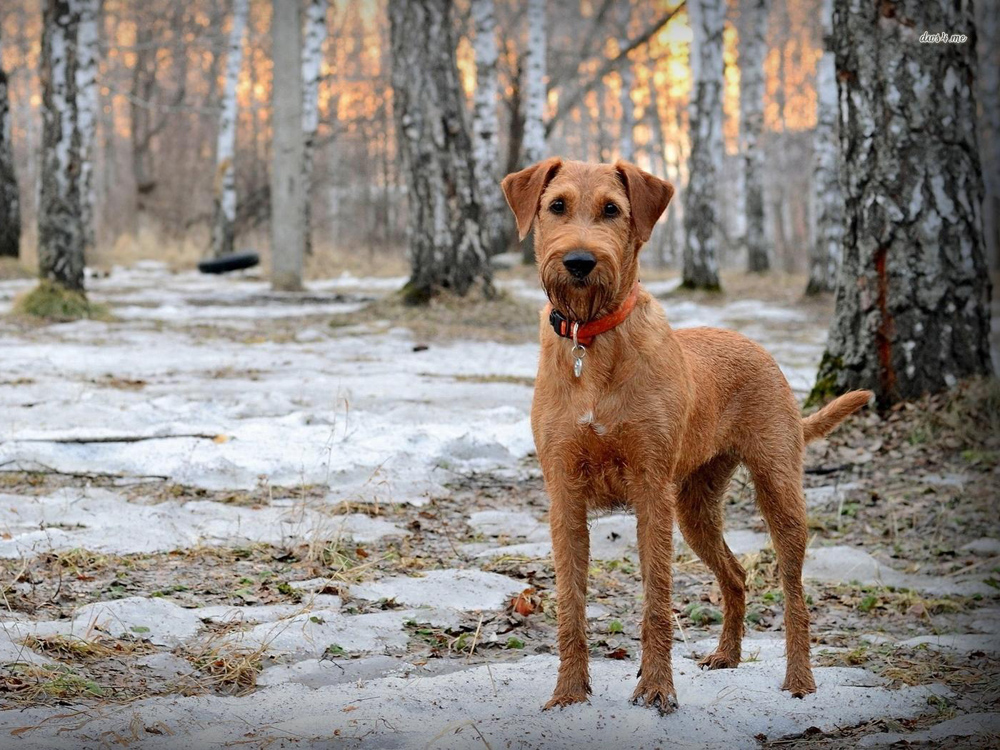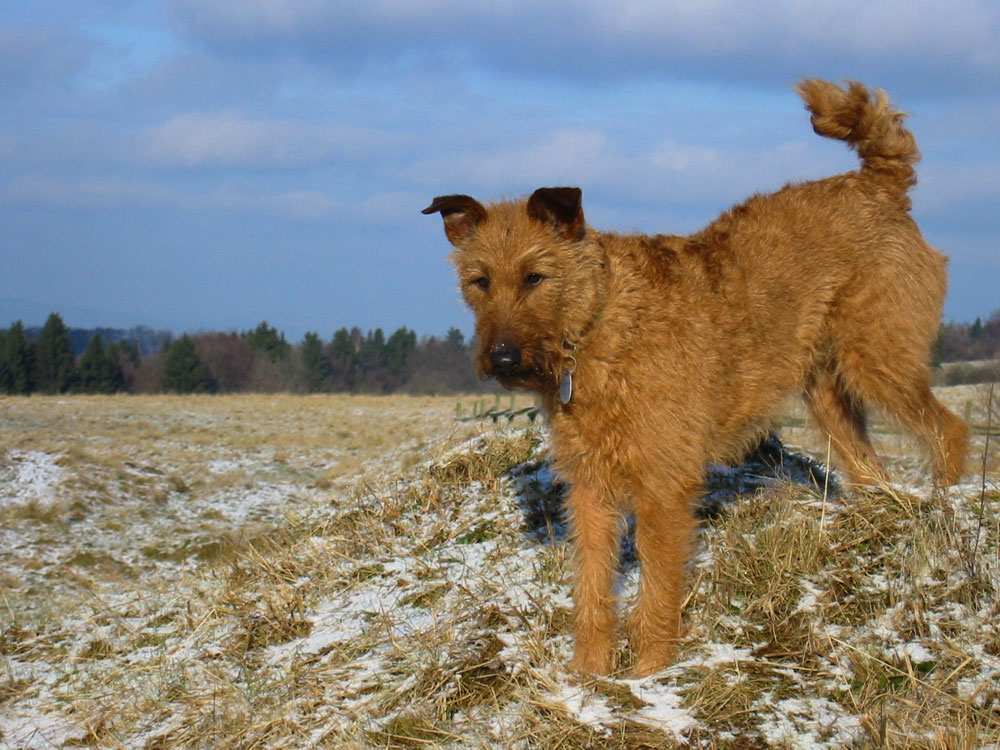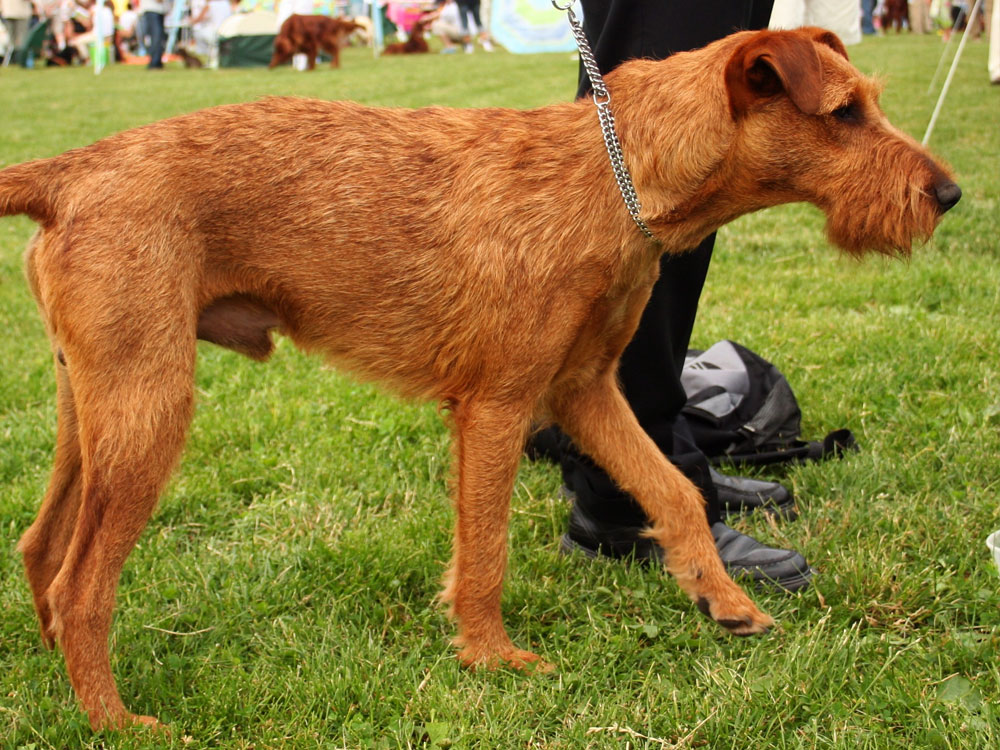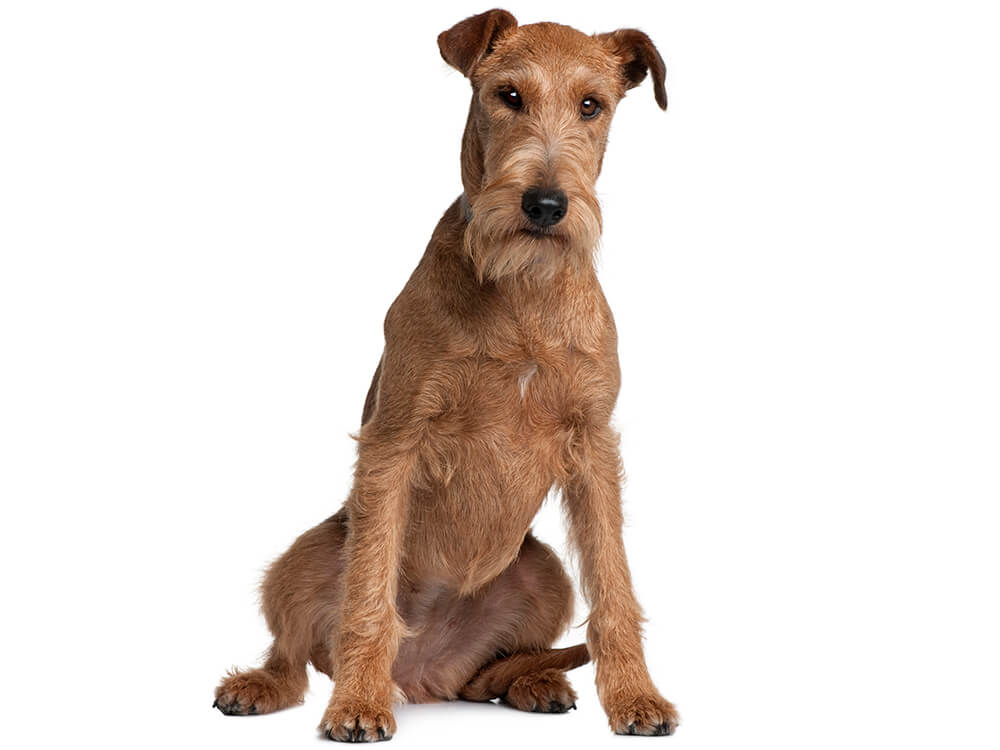
Irish Terrier Breed Pictures
Vital Breed Stats
| Height: | 35 - 45 cm M | 35 - 45 cm F |
| Weight: | 10 - 13 kg M | 10 - 12 kg F |
| Breed Group: | Working Dog Group |
| Life Expectancy: | 11 - 14 years |
| KC Registered: | No |
Breed Characteristics
| Size: |  |
| Grooming: |  |
| Exercise Level: |  |
| Trainability: |  |
| Barking Level: |  |
| Good with Children: |  |
| Good with other pets: |  |
| Affectionate: |  |
| Protective: |  |
| Cost to Keep: |  |
Give a thumbs up if you love the Irish Terrier

0
More About the Breed
History
Less is known about the origin of the Irish Terrier, but it is believed to be a descendant of the Black and Tan Terrier dogs of both Britain and Ireland. There also some speculations that the breed has an Irish Wolfhound mixed to its bloodline. Originally bred as a vermin dispatcher, the Irish Terrier has been described by an old Irish writer in 1947 as the "poor man's sentinel, farmer's friend or gentleman's favourite" because of its working qualities as a hunter.
It was in 1875 that the first Irish Terrier was shown to the public and quickly rose to fame 5 years later in 1880, becoming the fourth most sought-after breed in England. The first breed club in Dublin was established in 1879 with the Irish Terriers as the first member of the terrier group. It was also the first terrier recognised as a native Irish breed by the English Kennel Club.
In the late 19th century, Irish Terriers were imported to the US where they became somewhat popular. In 1920's this dog breed has become extremely popular, ranking in the 13th position among all the canine breeds in the US and gracing several show rings across the country. Sadly, the Irish Terrier’s popularity faded and it has become less favoured among the breeders. Today, only a few puppies are bred and registered in The Kennel Club every year.
Appearance
The Irish Terrier is a medium-sized, well-balanced terrier breed, powerful yet not heavy in form. It has an average weight of 25 to 27 pounds and a height of 46 to 48 centimetres. It has a flat skull, moderately long muzzle, and strong jaws, although its whiskers soften the rugged looks of the dog giving it a bit of character. This dog breed has a black nose, small dark eyes that are adorned with bushy eyebrows, and ears that are V-shaped and fold forward. It has a compact build with straight and long forelegs, deep muscular chests and tail that is docked, appearing shorter than its original length.
The Irish Terrier sports a dense and wiry topcoat, dense enough to cover the skin but not enough to hide its body outline. Under the rough topcoat is a fine and soft undercoat. Its double-layered coat is designed to protect the Irish Terrier from the cold and rough brush on a harsh terrain. The coat comes in a variety of colours such as bright red, red wheaten, golden red, or pale yellow. However, there are some Irish Terriers sporting a patch of white on their chest.
Grooming
Temperament
Intelligence
Irish Terriers have a strong affinity with children, that is short of saying this breed adores them, which makes they are a great playmate. However, no matter how attuned a dog is with children, adults need to supervise all interactions to avoid injury to both dog and the child.
When it comes to other pets, Irish Terriers can coexist with cats if they're raised with them from a young age. However, this dog breed does not get on well with other dogs and pets under the rodent family (e.g. mouse, rats, gerbils, hamsters).Its competitive streak often lands them in trouble with other dogs of the same sex, while its hunting instinct and prey drive may be too strong to control around small animals.
Nutrition
- Senior and less active: up to 695 calories daily
- Typical adults: up to 780 calories daily
- Physically active/working dogs: up to 870 calories daily
Feeding
Health
Exercise
Cost of Ownership
Ecstatic to get your own dog? Anyone would be, especially if they're getting a versatile dog like the Irish Terrier. Before you go and buy an Irish Terrier puppy, there are a few realities one must face to become a responsible dog owner – it's not going to be easy or cheap. It's not going to be easy since there are only a few Irish Terrier puppies that are bred and registered, which means you'll have to be put on a waitlist. It's not going to be cheap since other than the usual puppy price and food cost; there are tons of other financial obligations to consider to care for any dog properly.
Let us begin with how much an Irish Terrier puppy will cost you from £500 to £1,000 for a well-bred one. Then, there's pet insurance wherein the premium coverage will depend on the age and health of the dog and your location. On average a pet insurance for a 3-year old Irish Terrier will cost around £20 to £40 a month. Regular veterinary visits are also counted as a considerable cost, depending on the health of your dog. In a year, these visits will cost you more or less £900 including initial vaccinations and boosters. Food costs, for which for sure you have accounted for, will set you back £30 to £40 a month, excluding treats.
Is an Irish Terrier Right for You?
- The Irish Terrier is a versatile dog breed with a tough terrier disposition.
- It has a strong affinity with children and will make a great playmate.
- Irish Terriers do not shed much and are often grouped as hypoallergenic dogs.
- It has a high activity requirement and must be given adequate amount of exercise.
- It is generally healthy with an average life expectancy of 13 to 15 years.
- The Irish Terrier is a loyal and entertaining companion, efficient vermin hunter and an excellent watchdog.






